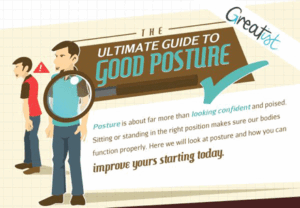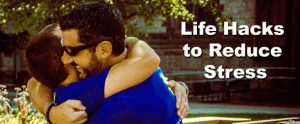Cramps Suck
Leg cramps can be frustrating. We have all experienced them at the most inopportune times. However, this may not be as unavoidable as one thinks. Sure, you stretched before your ran (everyone does…wink-wink). Conceding that you do actually take the time to stretch before you run, doesn’t mean you shouldn’t still experience a leg cramp. There are several methods of practice for stretching PRIOR to running that fly in the face of how one would stretch AFTER a run. If your pre-exercise stretch routine is done incorrectly, you may actually be increasing the chances of leg cramps more than if you didn’t stretch at all. Another factor to consider if you ARE doing the appropriate types of stretches prior to your run, is if your nutrition is poor. This will inevitably lead to unavoidable cramps as well. Bottom line is that there is no magic bullet to avoid getting leg cramps. Every person must learn about their own body and how it adapts to elevated activity, duration of exercise, climate and terrain conditions. Following the same routine your buddy does won’t necessarily yield the same results for you.
All that said, what are some great ways to reduce cramping and calm the neurological response occurring in your legs? My recommendation would be to perform theses stretches as soon as you start to feel a ‘twinge’ of discomfort that could manifest into something more. Don’t try and ‘run through it’! Think of performing these stretches as you would perform reps of free-weights at the gym; 3 sets of 10. Hold each individual ‘rep’ (stretch) for 1-2 seconds and then relax. If you do any of these by simply holding the stretch for 10-30 seconds, and then try to return to activity, you will most likely see an increase in your cramping, not a decrease. This type of active isolated stretching (AIS) helps to ‘unlock’ a cramping muscle, by communicating directly to the muscle spindle fibers that are overly excited and locking up.
1. Calf Cramps – Find a wall or tree. Extend your cramping leg straight out behind you with your heel flat on the ground. Place your non-cramping leg forward with the heel flat and knee bent. Slowly transfer your weight to your non-cramping leg until you feel a stretch in the extended cramping leg. When you feel a mild-medium stretch, count 1-2 seconds and transfer the weight back. Repeat this action 10 times with a 1-2 second pause in between each stretch.
2. Quad Cramps – Find a wall or a tree that you can use for balance assistance. Standing on the non-cramping leg, Flex your cramping leg back and reach with your same side hand to grab your foot. Pull your foot towards your same side glute until you feel a mild-medium stretch. Hold for 1-2 seconds and repeat 10 times. Note: To get the most out of a quad stretch, your thigh should be in slight extension. If the hip is in more flexion, there will be slack in the quad muscles, not allowing for a full stretch of the quads.
3. Hamstring Cramp – Find a low wall or park bench surface that you can raise your cramped leg up onto by resting your foot on the edge of it. Your non-cramping leg should be on a stable and level surface. Keep you cramped leg slightly bent and bend forward at the waist as if your upper and lower body are hinged together, keeping your head up and eyes forward. Don’t roll forward in your spine. You may need to adjust the slight bend in your knee as well as internally or externally rotating your foot to accommodate the spot of the cramp. Remember, hamstrings are comprised of three muscles that attach below the knee both medially and laterally. Again, hold the stretch for 1-2 seconds and repeat 10 times.
These stretches can be very helpful in the reduction of cramping. However, if your cramps are due more to nutritional depletion, there may be little else you can do but to live to run another day. Learn from every experience and adapt your training according to your own experiences. In the end, it is the only way to ever evolve and grow with your training program.
Ready to #feelbetter?
You're just a click away from a wicked good massage!
-

60 Minute Massage Gift Card
$170.00 Add to cart -

90 Minute Massage Gift Card
$255.00 Add to cart -

Mini Aer Small Room Air Purifier
$149.00 Add to cart -
Sale!

Thera-Pearl Sports Pack/Hot Cold
Original price was: $14.99.$12.99Current price is: $12.99. Add to cart -

3 Somadome Sessions Gift Card
$135.00 Add to cart -

TheraBand CLX Connective Loop
$14.99 Select options -

6 Somadome Sessions Gift Card
$270.00 Add to cart -
Sale!

Biofreeze
Original price was: $14.99.$12.99Current price is: $12.99. Add to cart
Passion Mountain
I was at an event recently and was asked by somebody how I could STILL be so passionate for what I do. He said, “What I mean is that you talk about what you do with the passion of child flipping through a new pack of baseball cards. I wish I was that passionate about…
Read MoreFish You Should Scale Back On
New Englander’s love their seafood and we deepen our love affair every summer when our favorite crustaceans, ‘lobstah’ is a plentiful. But what is the best seafood for us and what are the ones that we should be staying away from regardless of how yummy they may be? Monterey Bay Aquarium has combined data from…
Read MoreSports are a Great Metaphor
It’s no secret that my life has always revolved around athletics. From my early days playing pop warner football, through my college years of lacrosse and on into the various community leagues since, being part of a team has always been where I feel most comfortable. What I enjoy most about being part of a…
Read MoreWhat is an Expert?
“An expert is someone widely recognized as a reliable source of technique or skill whose faculty for judging or deciding rightly, justly, or wisely is accorded authority and status by their peers or the public in a specific well-distinguished domain.” – Wikipedia This past month I flew to Atlanta to present a few classes in…
Read MoreThe Power of a Hug
Originally Posted 5/1/2014; following the 1 year anniversary of the Boston Marathon Bombings and our mission to rebound after these horrible attacks on our city. We helped orchestrate the ‘One Run for Boston’; a 3328.2 NON-STOP running relay from LA to Boston, raising over $500K for the victims and survivors of the events of 4/20/2013.…
Read MoreTips from the Table
Without fail, every marathon season, I am asked by my patients, what kind of advice I would offer up to them as they prepare to run the Boston marathon. I first admit that I have never (nor will ever) run a marathon, but given my unique insight of spending 1000’s of hours alone in a…
Read MoreShoulder Impingement
The glenohumeral joint is a highly complex articulation. It has the greatest range of motion of any joint in the body. However, its increased motion occurs at the expense of stability, requiring the soft tissues to play a more critical role in maintaining joint integrity. As a result of increased mechanical demands, numerous soft-tissue injuries…
Read MoreTrain, train, train. Train of fools.
In my seventeen years as a massage therapist, I am still amazed by some of the things I see in my office. Being situated 1/10th of a mile from the finish line of one of the most prestigious marathons in the world, the Boston Marathon, we see more than our fair share of runners coming…
Read MoreAchilles Tendon Disorder
Achilles Tendon Disorder Massage therapists see many clients with active lifestyles. Running, jumping, dancing, climbing, or any number of other activities can put serious stress on the Achilles tendon (AT). AT disorders also can contribute to biomechanical disorders in the foot and lower extremity. That is why it is important for the massage practitioner to…
Read More


